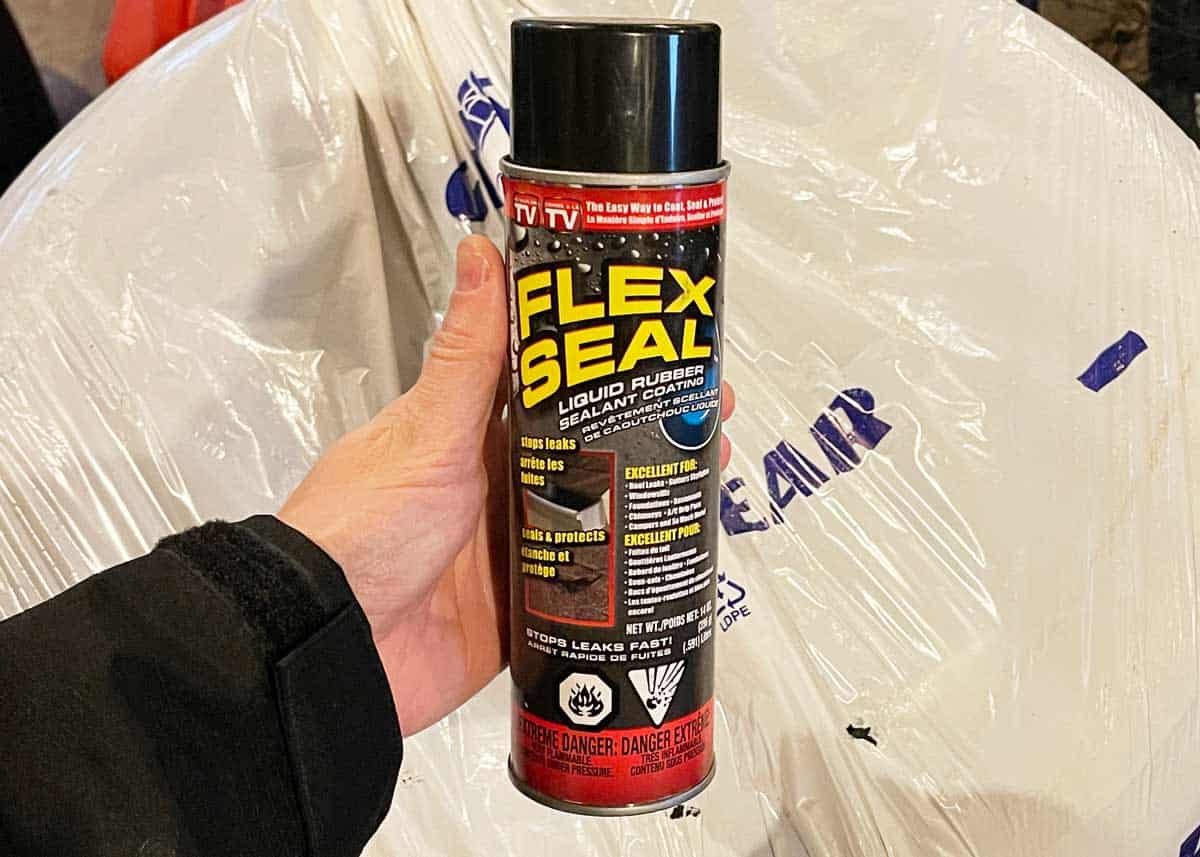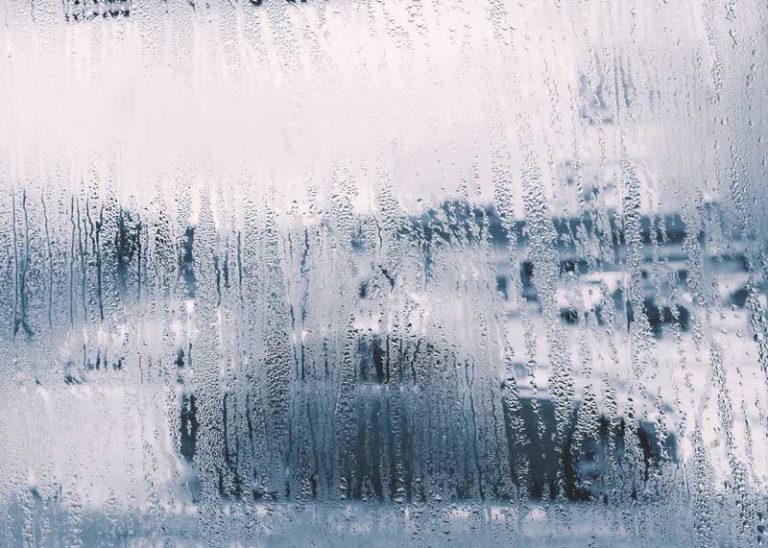How Long Does Flex Seal Last? (5 Factors) RV Owners Guide
Flex Seal is a popular rubberized sealant that dries quickly and creates a watertight barrier. It’s easy to use, and can be used on homes, boats, cars, and even RVs. Before you begin, you’re probably wondering how long does Flex Seal last.
When applied correctly (according to instructions) Flex Seal will last for three years, even longer. Many RV owners report their Flex Seal application is like-new, even after a few years. Officially, Flex Seal says that “Flex Seal will last for years without cracking, peeling or losing any of its strength or sealing properties.”
There are a number of factors affecting how long Flex Seal will last. Some situations, particularly in damp and humid places, might affect how well it adheres and, as a result, how well it lasts.

Let’s discuss what Flex Seal does for your RV and how long it typically lasts. Then, we’ll talk about its shelf life and how often you should reapply it.
How Long Does Flex Seal Last on an RV?
How long does Flex Seal last on an RV? It lasts several years without peeling or cracking when you spray it on clean, dry surfaces.
Factors like dampness and temperature affect the product’s lifetime. Let’s look at the specific places RV owners use Flex Seal and how long it lasts.
On Your RV Roof
How long does Flex Seal last on the RV roof? Roofs are one of the most common and critical places for RV sealant use. After all, a leaky lid poses a serious problem for the inside of the vehicle.
Correctly applied Flex Seal on your RV roof should last 3+ years.
If you wait for the spray to dry and add another coat, it can potentially last years. Don’t forget to maintain the sealant properly to extend its lifetime.
Apply several even coats until the surface has been completely covered and ALL cracks and holes have been filled. Always brush or roll over a larger area than just where the leak occurred.
Flex Seal
RV roofs constantly encounter rain and must be resilient. When you apply Flex Seal to the top of your vehicle, you must apply several coats to achieve years of protection.
If not, it might not completely cover all cracks and holes. Then, exposure to wind, rain, and other pressures can cause cracking and peeling. Flex Seal is UV-resistant, making it steadfast under the sun for many years.
Here’s a great video series by Life’s Sweet Journey. The first video is an 8-month check-in after resealing their RV roof with Flex Seal Liquid.
In this video, they do an update after 1.5 years since the original Flex Seal application.
They did an update after Hurricane Ian crossed Florida in September 2022.
Inside the RV
Inside your RV, there may be places you want to use Leak Seal. It can close small gaps in doorways, walls, vent edges, water fixtures, and the insides of windows.
Fortunately, these areas stay mostly dry. The rubberized sealant will deter the small amounts of moisture that appear.
- You can expect your Flex Seal to last many years without incident when used inside the vehicle. Because your sealed area isn’t exposed to harsh outside elements, it should last even longer inside your RV.
- While inside locations don’t require multiple layers, it’s a good idea to do a second coat. This will ensure that all holes and gaps are fully sealed.
Before applying Flex Seal, thoroughly clean the area to wash off contaminants like dirt and grime that may affect its application and shorten the sealant’s lifetime.
Outside the RV
Outer sealant locations for RVs include the outsides of windows, vents, doorways, and walls. These areas may encounter frequent rainfall and winds, though they do not face as much exposure as the roof.
A properly applied application of Flex Seal will last 3+ years in normal conditions.
Please note that Flex Seal doesn’t withstand high heat or pressure. It isn’t suitable for RV tires or water heaters. It also won’t tolerate high levels of flex along seam lines.

More reading: How much wind can an RV withstand?
What Factors Affect How Long Flex Seal Lasts?
Environmental factors impact how long Flex Seal lasts, regardless of where you use it on your RV. Inside locations are much more resilient to aspects like temperature and humidity, but they can still shorten the lifetime of the sealant.
1. Correct Application
This is the most important factor affecting how long your Flex Seal will continue waterproof.
Here are the steps for the correct application of Flex Seal Spray.
- Spray 8” to 12” from the surface, using an even, sweeping motion.
- Apply multiple, even coats until ALL cracks and holes have been filled. IMPORTANT: Allow 24 to 48 hours to dry before applying another coat.
- Let it dry completely. (It usually takes up to 24 to 48 hours to fully cure.)
The steps to apply Flex Seal Liquid are similar. Here are two additional details.
- Increase adhesion by etching the surface with sandpaper.
- Brush or roll Flex Seal Liquid using an even sweeping motion.
Other factors affecting successful application include application temperature, humidity, surface, and coating thickness.
Here’s more about each of these factors.
2. Temperature (Application and Operating)
Flex Seal handles the freezing and broiling temperatures that your RV will face. But it does have temperature limits. Here are the temperature requirements for Flex Seal Spray and Flex Seal Liquid.
Applying and using Flex Seal at temperatures outside of the following ranges can cause it to fail.
Application temperatures for Flex Seal Spray and Liquid.
- Flex Seal Spray: Apply spray at surface temperatures from 0°F to 100°F (-18°C to 38°C).
- Flex Seal Liquid: Roll or brush Flex Seal Liquid at temperatures ranging from 32°F to 120°F (0°C to 49°C).
Once fully cured, 24-48 hours later, here are the temperatures that Flex Seal can withstand.
- Flex Seal Spray: Once fully cured, Flex Seal Spray tolerates temperatures from -20°F to 140°F (-29°C to 60°C).
- Flex Seal Liquid: Once fully cured, Flex Seal Liquid can withstand temperatures from -80°F to 350°F (-62°C to 177°C).
Be sure to apply Flex Seal in cool, dry places to give the product time to cure (solidify).
3. Humidity and Moisture
I’ve read some blog posts that say “constant exposure to humidity and moisture makes Flex Seal peel and crack”. Of course, this doesn’t make sense. It is a rubberized sealant – it was made for exposure to moisture and humidity.
I think what they mean is that the surface should be dry. Otherwise, the moisture under the sealant will be trapped and may affect how well Flex Seal adheres.
And humidity only plays a factor in the cure time. If the air has high humidity, the cure time will be longer. That’s all.
To increase its life, apply Flex Seal on clean, dry surfaces before exposing it to moisture and humidity. If you live in continuously wet and humid areas, keep an eye on your RV and consider reapplying Flex Seal as required. Keep an eye out, especially for signs of cracking and peeling.
4. Surface Quality
Flex Seal’s spray-on formula does work on rough surfaces, but contaminants like loose dirt can shorten its lifetime. Polished, smooth surfaces are more susceptible to peeling.
Before applying Flex Seal, remember to thoroughly clean, wipe, and dry the designated area. Removing loose bits will allow more of the sealant to make contact with your RV. The sealant works great on flat, broad areas like the RV roof and walls. And it will be more resistant to peeling and cracking from the vehicle’s movement.
If you have a very smooth surface, Flex Seal recommends roughing up the surface a little (with sandpaper) to improve adhesion.
5. Coating Thickness
The last factor that affects Flex Seal’s lifetime is the coating thickness. The more material you use on your RV, the better it will adhere and defend against the elements when it dries. If you’re applying the sealant to areas that face constant wind and moisture, apply extra layers so it remains intact.
It’s best to apply multiple, thin layers rather than one thick coating. Allowing time to cure between coats will result in a stronger, more durable seal.
If applying Flex Seal Liquid, don’t pour a depth greater than ¼ inch at one time. Pour up to a ¼ inch layer, and allow a minimum of 48 hours to cure before pouring the next layer.
How Long Does Flex Seal Last on the Shelf?
A can of spray Flex Seal has a shelf life of 24 months, according to the manufacturer. Like many manufacturers’ dates, often it will last longer than stated. I have a partial can of Flex Seal Spray that is 3 years old and still works.
- Flex Seal Storage Temperature: 60°F to 100°F (15°C to 38°C). In most cases, this means storing it inside your home and not in an unheated garage or shed. Our garage isn’t heated and often falls much below freezing during winter months.
If you have Flex Seal Liquid, ensure that the lid is well seated before storage. Otherwise, it could dry out.
Tip: For aerosol sealing products and adhesives, I like to turn the can upside down, and press the nozzle until it sprays clean. This keeps it open and free for use the next time.
Checking your RV for water tightness is an important step to winterize your camper.

Checking your roof seams before winter is even more important if aren’t going to cover your RV.
Did you overspray a little? Here’s how to remove Flex Seal from 6 common surfaces.
Your Turn
Flex Seal will last years when correctly applied. If you notice cracking or peeling, clean the area and apply a new coat to enjoy more watertight sealing.
How long is your Flex Seal application lasting? Where are you applying Flex Seal on your RV? I would love to hear what’s working for you.








After carefully following instructions for repairing cracks in rv shower floor, (including drilling holes in shower floor to add gap filler foam to keep floor from caving, and sanding before application of FlexSeal-yes I cleaned and dried the area!), I allowed the necessary cure time, then gave it an additional 2nd & third coat. Satisfied with the results, until I began to notice first, cracks in the Flex seal, then pieces of rubber tearing away from the shower floor, sometimes blocking the drain! I “fixed” the shower floor less than a year ago, and noticed the first crack within mayyybe, 6 months, then shortly thereafter, the rubber tearing away. I obviously need to reconsider an alternative low cost “fix” that will be more effective. & Last MUCH much longer. I have purchased several variations of Flex Seal, so I’m a believer in the product.. However, I must accept that Flex-Seal, is definitely NOT a “Fix-All”. Very disappointed this time around.
Flex seal last roughly 10-12 years on the RV roof but its lifespan also depends on the compatibility between the seal and the RV roof.